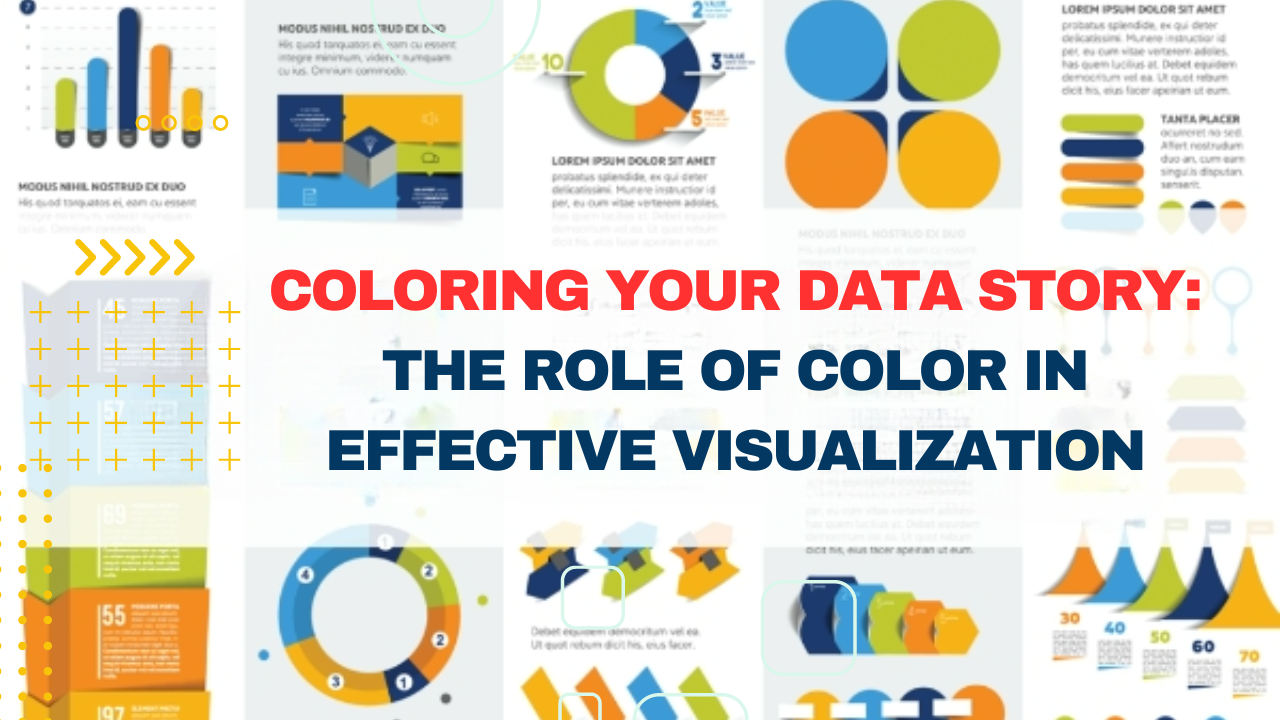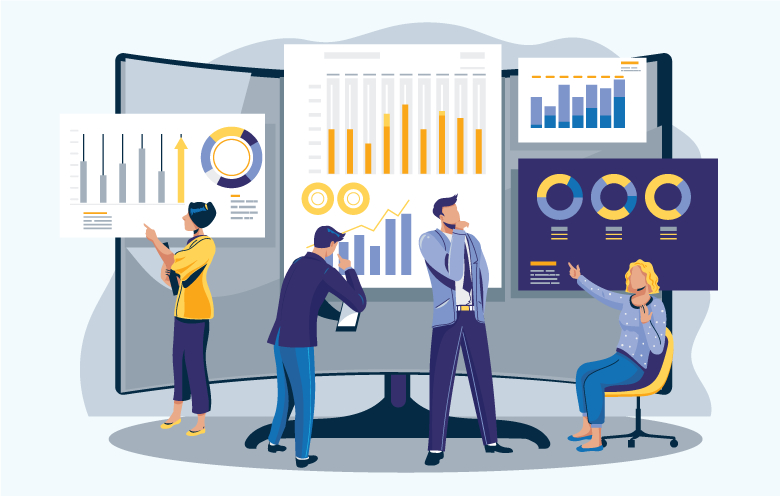
Category: Articles
Description:

Islam Soliman | May 2, 2023
Business Analyst | Data Analyst | Data Visualization | Business Development | Programmer
Coloring Your Data Story: The Role of Color in Effective Visualization


In data visualisation, colour is a potent tool that can be used to convey complex information in a way that is simple to understand. When used wisely, colour can strengthen a visualization's message, increasing its impact and helping viewers remember it. In this essay, we'll look at the value of colour in data visualisation, its benefits, and colour usage best practices.
The ability to highlight patterns and relationships that might not be immediately obvious in a monochromatic display is one of the main advantages of colour in data visualisation. Viewers can quickly and easily spot trends and patterns within the data by using different colours to represent different data points or categories. For instance, a heatmap can be used to show how concentrated a certain value or metric is across various regions, and the viewer can easily spot densely concentrated areas thanks to the colour gradient.
Color can be used to draw attention to particular elements within visualization in addition to highlighting patterns. Designers can direct the viewer's attention to important details they want to emphasize by using contrasting or bright colors. When dealing with large amounts of data, where it can be simple for viewers to become overwhelmed by the sheer volume of information presented, this can be especially helpful.
The ability of colour to arouse feelings and stimulate visual interest is another advantage of colour in data visualisation. Colour can elicit an emotional response in viewers and, depending on the colour scheme used, can be used to convey a variety of moods or feelings. Warm hues like red and orange, for instance, can arouse feelings of excitement or vitality, whereas cool hues like blue and green, on the other hand, can induce feelings of serenity or relaxation.
Despite the many benefits of colour in data visualisation, it's important to keep in mind that there may also be cons to take into account. Using too many colours in a single visualisation is a common error that can make the display appear cluttered and overwhelming. Additionally, this may make it challenging for viewers to distinguish between various data points, which may cause confusion and incorrect interpretation of the data.
The possibility of colour being biassed due to cultural and individual factors is another potential drawback. As a result of different cultural and personal associations with particular colours, people may interpret the information differently. Designers must be aware of these biases and select colour schemes that are appropriate and approachable for the target audience.
There are a number of best practises that designers should adhere to in order to use colour effectively in data visualisation. Utilising a limited colour palette that is constant throughout the visualisation is one important rule. This can make it simpler for viewers to distinguish between various data points and foster a sense of visual harmony. It's crucial to strategically use colour, emphasising only the most crucial details and averting unneeded visual distractions.
Making colour selections that are inclusive and accessible to all viewers is another best practise. This entails avoiding colours that might be offensive or culturally insensitive as well as using colour schemes that are simple for people with colour vision deficiencies to distinguish. Designers can make sure that their visualisations are effective and suitable for a variety of viewers by emphasising accessibility and inclusivity.
colour is a crucial tool in data visualisation that can support the effective and clear communication of complex information. Designers can produce visualisations that are interesting, educational, and open to all viewers by strategically using colour and adhering to best practises for colour selection and use. Colour is a crucial factor to take into account when designing effective data visualisations, regardless of whether you are making a straightforward chart or a sophisticated interactive dashboard.
Here are some references that you may find useful to further explore the importance of color in data visualization:
"Data Visualization: A Practical Guide to Principles, Techniques, and Tools" by Hadley Wickham and Garrett Grolemund - This book provides an in-depth look at the principles and best practices of data visualization, including the effective use of color.
"The Elements of Color" by Johannes Itten - This classic book explores the principles of color theory and their applications in art and design.
"Color Design Workbook: A Real World Guide to Using Color in Graphic Design" by Sean Adams - This book provides practical guidance and inspiration for using color in graphic design, including data visualization.
"Interactive Data Visualization for the Web" by Scott Murray - This book provides a comprehensive guide to creating interactive visualizations for the web, including tips on effective use of color.
"The Power of Color in Data Visualization" by Daniel Zvinca and Maarten Lambrechts - This article provides a detailed exploration of the use of color in data visualization, including best practices and case studies.
"Choosing Colors for Data Visualization" by Lisa Charlotte Rost - This article provides practical tips and examples for selecting effective color schemes for data visualization.
"ColorBrewer: Color Advice for Maps" - This online tool provides guidance on selecting color schemes for maps, which can also be useful for data visualization.
I hope you find these references helpful!

#DataVisualization #ColorInDataViz #DataVizTips #InformationDesign #DataStorytelling #VisualCommunication #DataInsights #DataAnalysis #GraphicDesign #ColorTheory